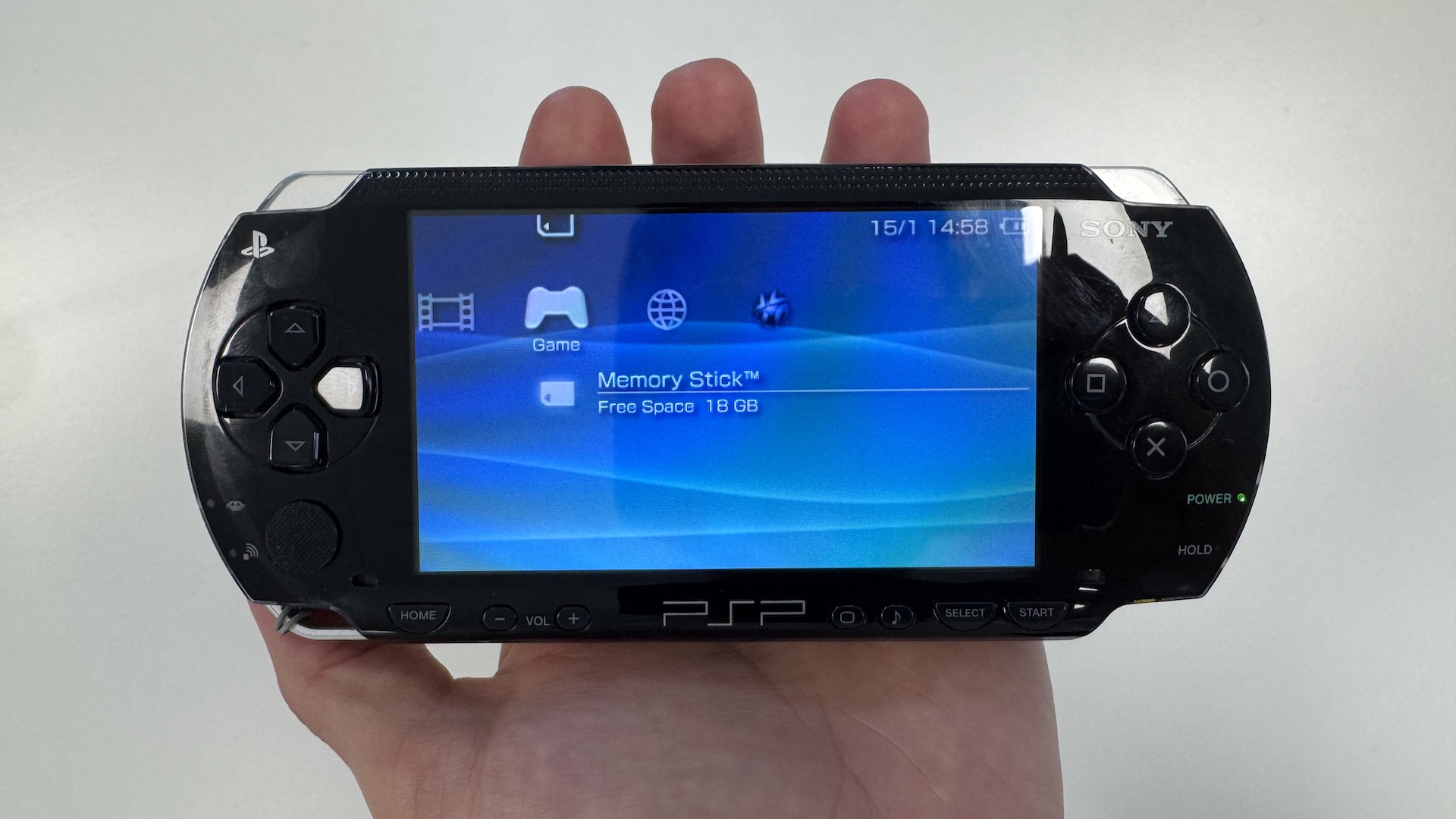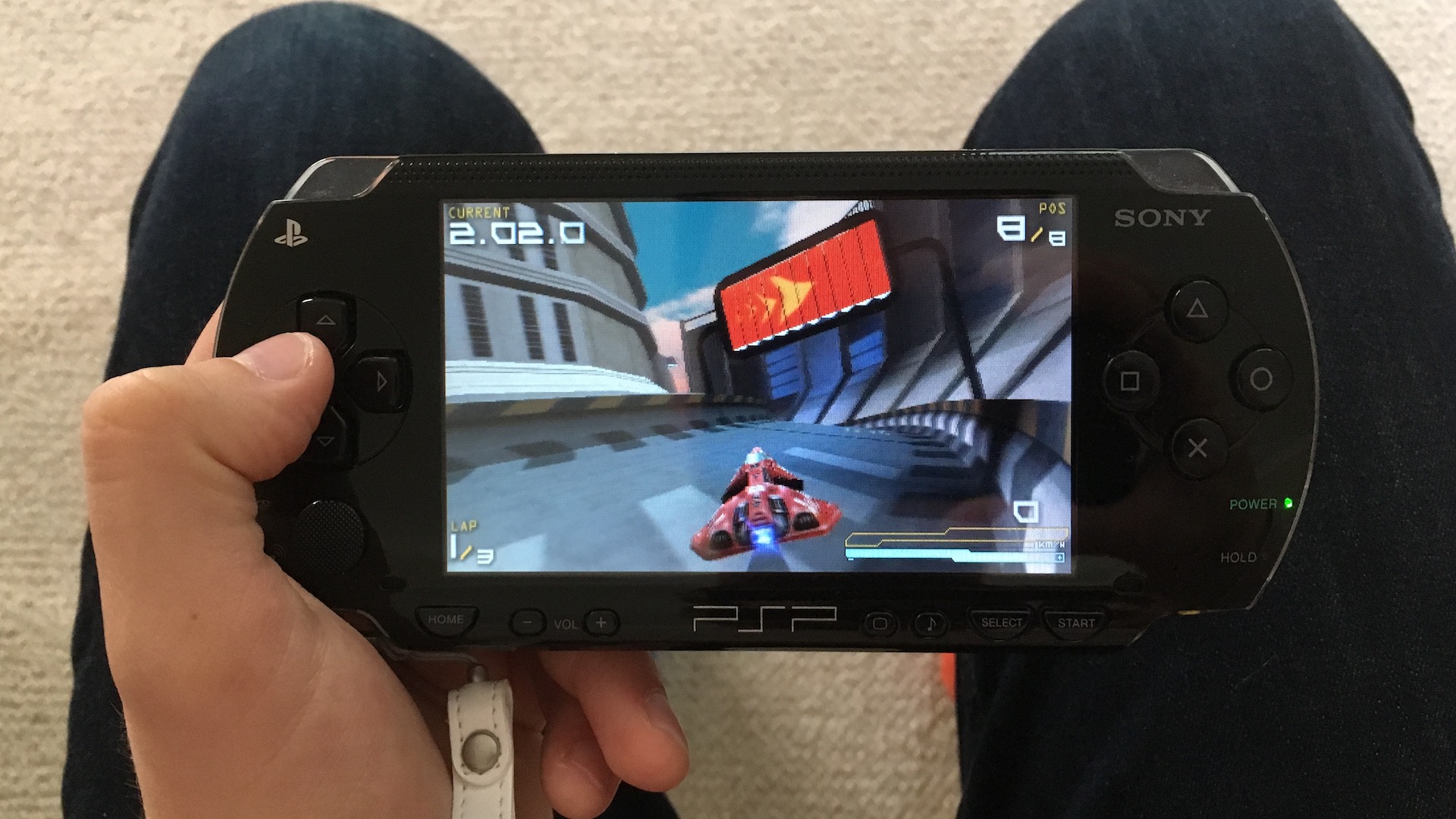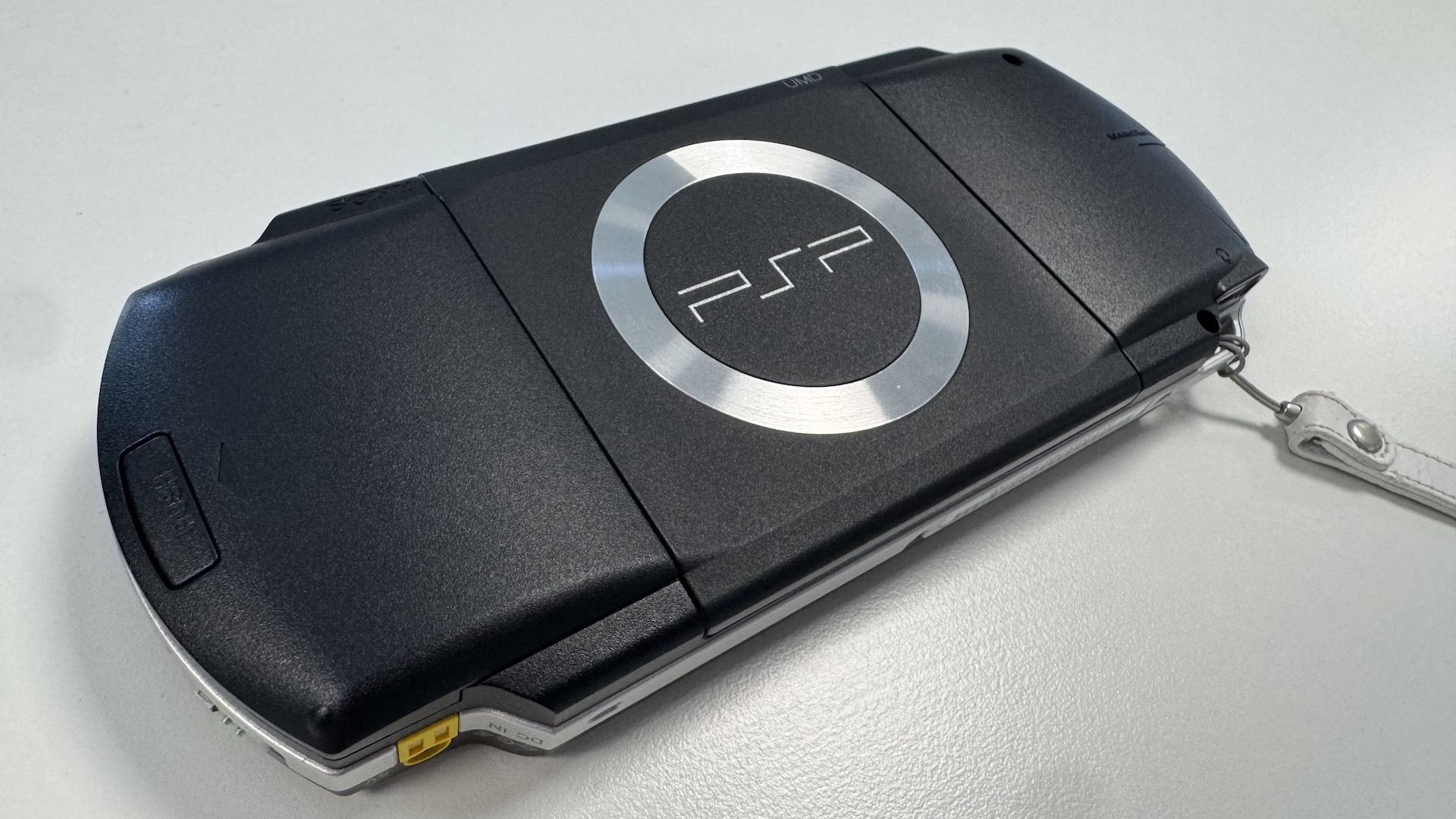Nothing will ever be as cool as the Sony PSP – not even the Switch 2

While most gaming fans have spent this month getting to grips with their brand new Nintendo Switch 2 consoles, I've been excitedly awaiting delivery of an altogether different handheld. One that, to my minor horror (because of how it reflects on my own age), turned has just turned twenty years old. I speak, of course, of the Sony PSP – a device I lusted over as a teenager, and one that still manages to look and feel futuristic today.
In today's world of incremental updates, it can be hard to remember just how quickly games consoles improved, at least graphically, across the nineties and noughties. In eight years, we've jumped from the Nintendo Switch to the Nintendo Switch 2. That's nothing compared to the jump from the Game Boy Pocket to the PSP, which took place in roughly the same time. And while it might not impress Gen Alpha much, the first generation PSP still unlocks that childlike wonder I experienced when I first laid eyes on it in 2004. Rather than one of the best retro games consoles, it's one of the best consoles full stop.

When it was first announced over 20 years ago, the PSP felt cooler than the competition in the same way that the PlayStation felt cooler than the Sega Saturn and N64. A lot of this was down to marketing; instead of colourful characters and talking animals, Sony's games were all about sleek graphics and futuristic racers. In short, they felt like they were for adults – which was catnip to thirteen year-old me.
Take WipeOut Pure and Ridge Racer, two launch titles I snagged with my PSP on the UK launch day in 2005. Both felt impossibly futuristic at the time. It wasn't just the much-touted PS2-quality graphics (in reality the PSP sat somewhere between the PS1 and PS2), but also the music and menu design. Everything about these titles oozed class, and it still blows me away that they can be played on the go.

But the coolest and classiest thing about the PSP was always the hardware design itself. Utilitarian design touches such as the speaker grille and polished black finish set the device apart from the likes of the Nintendo DS. And that 4.3-inch display might not seem large in today's world of unnecessarily large smartphones, but back then it was incredible. According to our sister site GamesRadar, one attendee at the E3 launch exclaimed "You can see the screen from the other side of the fucking hall."
And yet somehow the PSP didn't manage to set the world alike in quite the same way as the DS, despite its superior graphics and design. Why? For my money, Sony was a victim of bad timing. The PSP was an incredibly ambitious device, intended to become the 'Walkman' of its generation. It could hold photos! It could play videos! It could play music! But then along came something else that did the whole 'everything device' better. Yep, I'm talking about the iPhone. Suddenly, the PSP looked confused. It wasn't a dedicated gaming device like Nintendo's offering, but it couldn't do as much as the smartphone – no touchscreen, no calls, texts and emails.
But as I enter my nostalgic era (my 'new' PSP is currently sitting next to my 'new' iPod mini), I'm still blown away by the PSP from a hardware perspective. The device is almost too beautiful – back in then I was terrified of scratching it, and I feel the same way about the second-hand model I've just unboxed. It might not have changed the world, but the PSP was the coolest and most ambitious console I'd ever seen in 2005. And in a world of 'more of the same' updates, that's something to be celebrated.
Daily design news, reviews, how-tos and more, as picked by the editors.

Daniel John is Design Editor at Creative Bloq. He reports on the worlds of design, branding and lifestyle tech, and has covered several industry events including Milan Design Week, OFFF Barcelona and Adobe Max in Los Angeles. He has interviewed leaders and designers at brands including Apple, Microsoft and Adobe. Daniel's debut book of short stories and poems was published in 2018, and his comedy newsletter is a Substack Bestseller.
You must confirm your public display name before commenting
Please logout and then login again, you will then be prompted to enter your display name.

